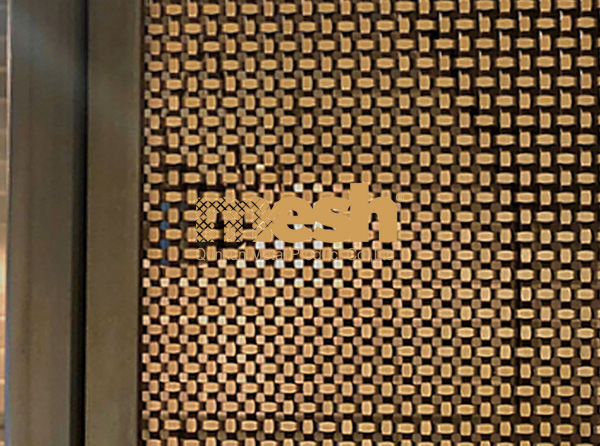At the forefront of these innovations is architectural woven mesh, a transformative material that has revolutionized the architectural domain. In the ever-evolving landscape of architecture and design, innovations continually redefine the way we envision, construct, and interact with our built environment. This article unravels the profound impact of woven mesh technology on the future of architecture, showcasing how it is reshaping the way we build and envision the world around us.

1. The Evolution of Architectural Woven Mesh
Architectural woven mesh has come a long way from its humble origins. Initially used for functional purposes like security and filtration, it has transformed into a versatile material that marries functionality with aesthetic appeal. Modern woven mesh is a result of relentless innovation, blending traditional weaving techniques with cutting-edge technology.
2. Advanced Materials for Superior Performance
Innovations in architectural woven mesh technology have led to the use of advanced materials that enhance performance. Stainless steel, aluminum, and other high-quality alloys are now utilized, offering durability, corrosion resistance, and sustainability. These materials ensure that the woven mesh can withstand the test of time and the elements, making it a reliable choice for architectural applications.

3. Customization: Tailoring Solutions to Needs
One of the most remarkable innovations is the level of customization now possible with architectural woven mesh. Advanced technology allows for intricate patterns, varying degrees of transparency, and perse color options. Architects and designers can tailor the mesh to suit the specific needs and aesthetic preferences of a project, enabling a truly bespoke design approach.
4. Integration of Digital Tools and Simulation
Digital tools and simulation software have significantly impacted the design and application of architectural woven mesh. Architects can now use these tools to visualize how the mesh will interact with light and the surrounding environment. This foresight helps in making informed design decisions, ensuring the optimal use of woven mesh for both functional and aesthetic purposes.
5. Energy Efficiency and Sustainable Design
Modern architectural woven mesh is designed to be energy-efficient, allowing for natural airflow and sunlight penetration. This contributes to a reduction in energy consumption, making it an eco-friendly choice. Architects can now seamlessly integrate sustainability into their designs, meeting the increasing demand for environmentally conscious buildings.
Conclusion
Innovations in architectural woven mesh technology are propelling the future of architecture into exciting and uncharted territories. The seamless blend of form and function, sustainability, and the potential for interactivity present an exciting vision of what lies ahead. As we harness the power of woven mesh technology, we embrace a future where architecture isn't just static but a living, breathing entity, in perfect harmony with both its occupants and the environment.
pre:Architectural Woven Mesh: The Intersection of Art and Engineering
next:Choosing the Right Woven Wire Drapery: Tips for Homeowners
© 2025 Joinwin Architectural Wire. All Rights Reserved. | Sitemap
Recommended Read
Architectural Woven Wire Mesh: Redefining Modern Space Design
Architectural Decoration Network: Ideal for Modern Architecture and Interior Design